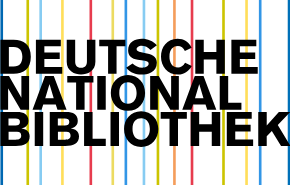APPROACHES TO MAINTAINING THE RELIABILITY OF AUTOMOTIVE ENGINES UNDER HIGH-TEMPERATURE CLIMATE CONDITIONS
DOI:
https://doi.org/10.55640/Keywords:
Engine, reliability, design, various operating conditions, failures, strength, tension.Abstract
The main results of research work related to the development of theoretical and experimental methods for assessing the reliability of automobile engines operating in extreme hot climatic conditions based on the strength of internal combustion engines at the stage of their design and development are outlined. The most characteristic types and sources of engine failures, reliability criteria for engine elements are considered.
References
1.Антропов Б.С. и др. Обеспечение работоспособности автотракторных дизельных двигателей
Ярославль: Издательство ЯГТУ, 2005 - 186 с. Антропов Б. С., Слабов Е. П., Звонкин Ю. З., Тимашёв
2.Гоц А.Н. Расчеты на прочность деталей ДВС при напряжениях, переменных во времени
Владимир: Изд-во Владим. гос. ун-та, 2011. — 140 с.
3.Жуков, В. А. , А. П. Навоев. Оценка и обеспечение надежности двигателей внутреннего сгорания Рыбинск,: РГАТУ им. П. А. Соловьева, 2013. - 194 с.
4.Дмитриевский А.В., Тюфяков А.С. Электронные системы управления бензиновыми ДВС. // Автомобильная промышленность. 2000, № 3. С. 21-25.
5.Каримходжаев Н., Алматаев Т.О., Одилов Х.Р. Основные причины, вызывающие износ деталей автотранспортных средств, эксплуатирующихся в различных природно-климатических условиях // Universum: Технические науки : электрон. научн. журн. 2020. № 5(74). URL: http://7universum.com/ru/ tech/archive/item/9435.
6.Каримходжаев Н.,Касимов И.С., Ёкубов Ё.О. Оценка абразивной способности загрязнений топлива автомобильных двигателей, эксплуатирующихся в жаркой, высоко запыленной зоне Центральной Азии. Москва, Научный журнал Universum , №11(68), 2019. С.46-49 .
7.Каня В.А., Пономаренко В.С. Расчёт на прочность деталей кривошипно-шатунного механизма двигателей внутреннего сгорания.Омск: СибАДИ, 2013. — 78 с.
Downloads
Published
Issue
Section
License

This work is licensed under a Creative Commons Attribution 4.0 International License.
Authors retain the copyright of their manuscripts, and all Open Access articles are disseminated under the terms of the Creative Commons Attribution License 4.0 (CC-BY), which licenses unrestricted use, distribution, and reproduction in any medium, provided that the original work is appropriately cited. The use of general descriptive names, trade names, trademarks, and so forth in this publication, even if not specifically identified, does not imply that these names are not protected by the relevant laws and regulations.







